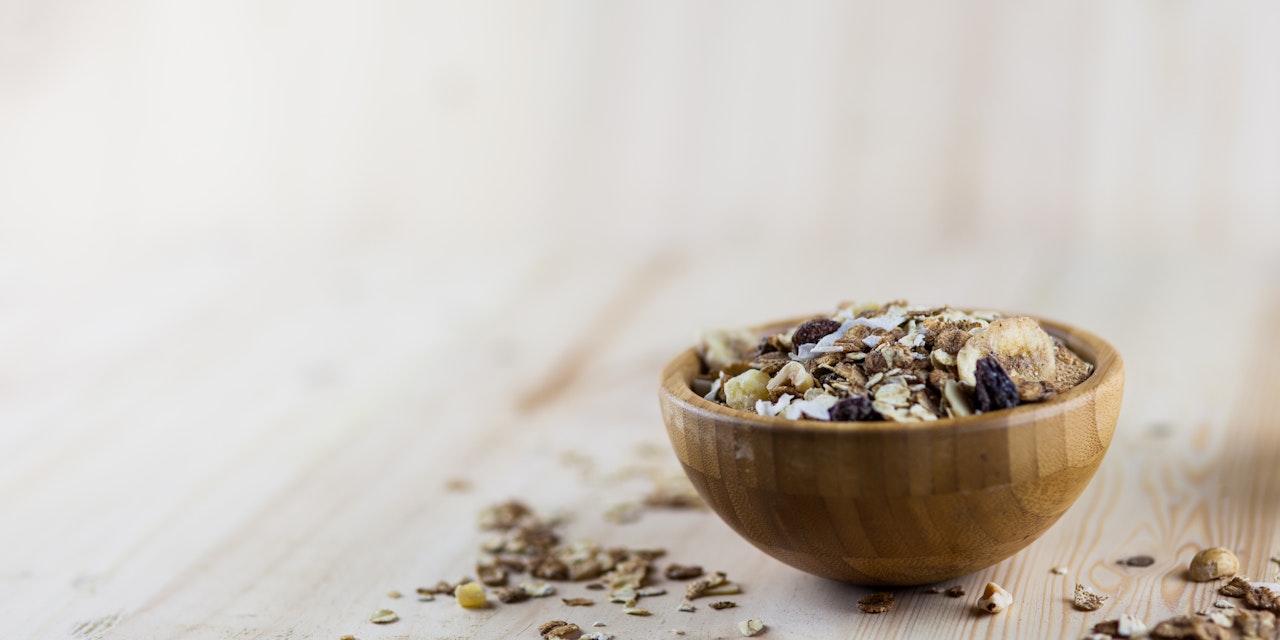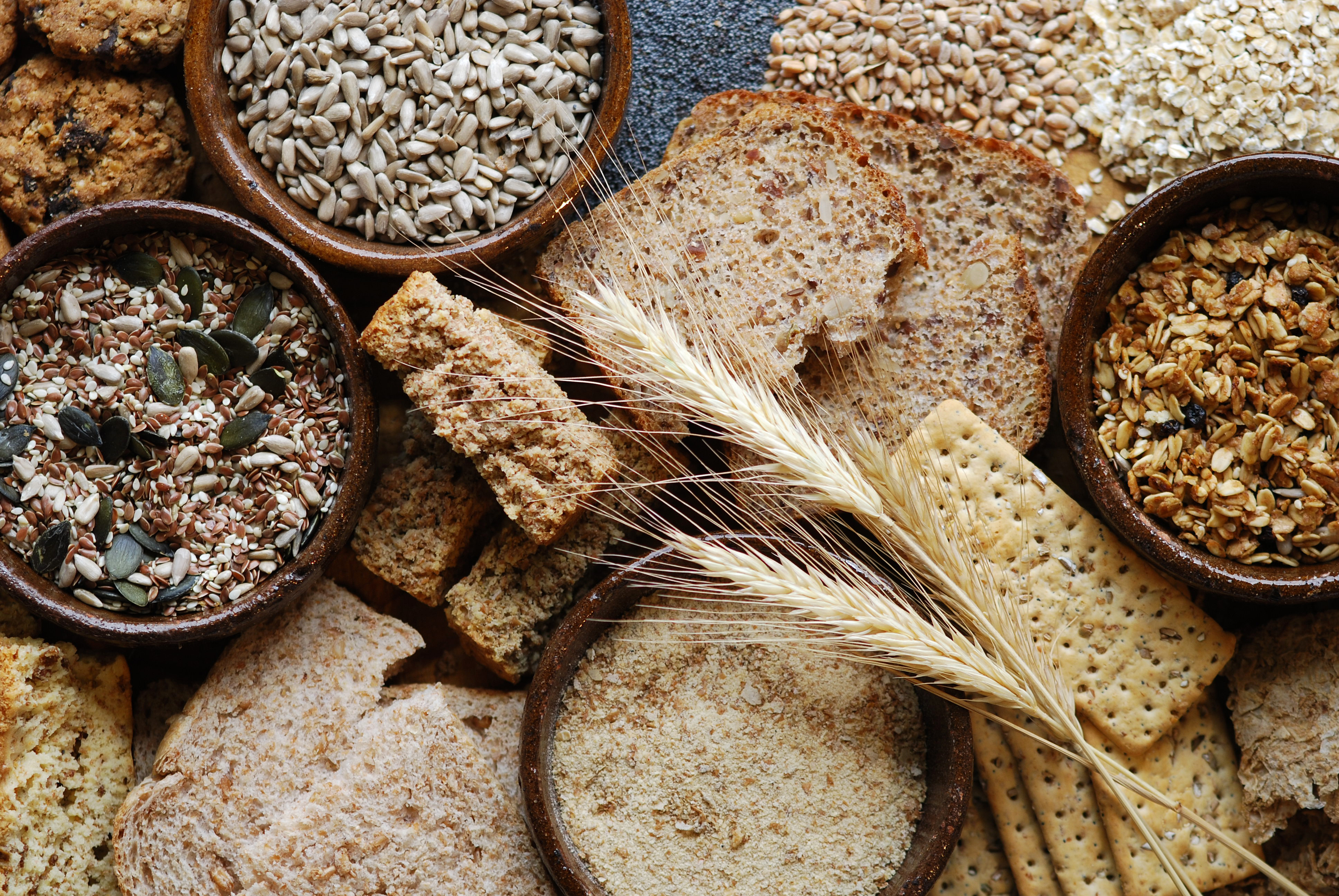What Fiber Is and Where We Can Find It
There are many controversial topics in nutrition. You can hear people swear by one diet, that a specific one is superior to all other. However, w…
- Published: 8/7/2017
- Categories:
- 4 min. read

- Published: 8/7/2017
- Categories:
- 4 min. read
There are many controversial topics in nutrition. You can hear people swear by one diet or that a specific one is superior to all others. However, what you usually don’t hear is something negative about fiber. When getting nutritional advice, you often hear that you should limit sugar intake and try to eat food high in fiber, but what exactly is fiber, and why should you eat it?
What is fiber?
Let’s start from the beginning. Carbohydrate is a macronutrient and is, for example, the main energy-containing macronutrient in food like grains, potatoes, rice, pasta, beans, and legumes. Carbohydrates can be grouped into two different categories in terms of the human body's ability to break them down. Simply:
1) the type of carbohydrate the human body can break down and
2) the type of carbohydrate the human body can´t break down.
Table sugar (sucrose) and starches are part of the group that can be broken down.
Whereas the group of carbohydrates that can´t be broken down is called fiber. Fiber was first defined as the part of a plant that the digestive enzymes in the human body can´t digest or break down[a] (Otles and Ozgoz, 2014). Now that we have a rough idea of what fiber is, we can delve even deeper into fiber exploration.
What makes the topic of fiber a bit more complicated is the many classifications that exist. For example, fiber can be classified according to different characteristics solubility, dietary/functional fiber[b], fermentable, non-fermentable, viscous, and non-viscous fibers. This means that a fiber can be both a dietary, soluble, fermentable, and viscous fiber, e.g., B-glucans.
As mentioned above, dietary fiber can be divided into several categories; one of the most useful, in terms of effects on the body, is to divide fiber into soluble and insoluble, depending on the fiber´s water solubility. In part 2, we will see slightly different health effects depending on the solubility of the fiber.
Soluble fiber:
- Includes inulin, pentosans, pectin, polydextrose, gums, β-glucan (found in oats and barley, for example), and mucilage.
- Dissolves in water forming viscous gels (water-soluble).
- Bypass the digestion of the small intestine
- Easily fermented by the microflora of the large intestine slows down digestive system.
- Slows down the digestive system.
Insoluble fiber:
- Includes cellulose, part of hemicellulose, and lignin.
- Do not form gels (not water-soluble)
- Limited fermentation by the microflora in the GI-tract
- Speeds up the digestive system
Usually, insoluble fibers are found in larger amounts in fiber-containing food with approximately 2/3 insoluble and 1/3 soluble fibers (Otles and Ozgoz, 2014).
Where do we find fiber?
Fiber is mainly found in legumes, beans, whole grains, vegetables, cereals, and fruits. In table 1, soluble fiber, insoluble, and total fiber are listed as some common food.
Table 1. Fiber content of different food (g/100g as eaten) (Li et al., 2002) .

Fiber can also be added to different food. For example, many protein bars contain added fiber. Usually, some sort of soluble fiber is added, for example, oligofructose. Oligofructose is used because it doesn’t raise blood glucose or stimulates insulin secretion but tastes sweet (about 30-50% of the sweetness of sucrose (table sugar)), only provides 1.5 Cal/g of energy, and adds a nice texture to lower calorie food (Niness, 1999).
In the next installment, we will go through what happens to fiber when we eat it as well as the health effects of fiber.
Fredrik Wernstål is a final year medical student with a passion for nutrition, training, performance, and health. His goal is to help people reach a healthier and happier life by providing research-based advice.
[a] A word of caution, the definition of fiber is a bit different between different countries. For example, USA follows the AOAC definition, which includes resistant starches, oligosaccharides, and lignin (these are in addition to NSP also resistant to digestion) as fiber, whereas the UK only counts NSP (Non-starch polysaccharides) as fiber.
[b] Dietary fibers are non-digestible carbohydrates and lignin (not carbohydrates) found in plants.
We also have something called functional fibers. These are non-digestible carbohydrates that have been isolated and have beneficial effects on humans (Maćkowiak et al., 2016). For example, if a certain fiber occurs naturally in any given food, it is a dietary fiber, but if the same fiber has been isolated and then added to a food, it is classified as functional fiber. Total fiber is the sum of dietary fiber and functional fiber.
References:
Li, B.W., Andrews, K.W., Pehrsson, P.R., 2002. Individual Sugars, Soluble, and Insoluble Dietary Fiber Contents of 70 High Consumption Foods. J. Food Compos. Anal. 15, 715–723. doi:10.1006/jfca.2002.1096
Maćkowiak, K., Torlińska-Walkowiak, N., Torlińska, B., 2016. Dietary fibre as an important constituent of the diet. Postepy Hig. Med. Doswiadczalnej Online 70, 104–109. doi:10.5604/17322693.1195842
Niness, K.R., 1999. Inulin and Oligofructose: What Are They? J. Nutr. 129, 1402S–1406s.
Otles, S., Ozgoz, S., 2014. Health effects of dietary fiber. Acta Sci. Pol. Technol. Aliment. 13, 191–202.
All of the content and media on Lifesum is created and published for information purposes only. It is not intended to be used as a substitute for medical advice or treatment. Users should always consult with a doctor or other health care professional for medical advice. If you have or think you are at risk of developing an eating disorder, do not use the Lifesum app and seek immediate medical help.

